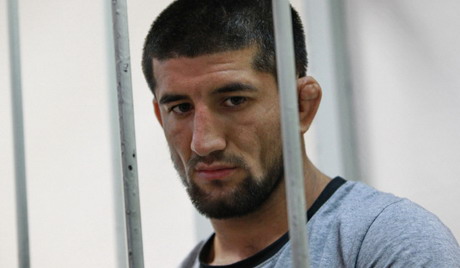
Demographic Tug of War in Stavropol Undermines Kremlin Plans for North Caucasus Melting Pot
Publication: Eurasia Daily Monitor Volume: 8 Issue: 168
By:

On September 12, the Kavkazsky Uzel (Caucasian Knot) website reported there had been a large-scale displacement of ethnic Dagestanis from the Stavropol region. A local court in the region’s Andropovsky district annulled the registration of at least 21 Dagestanis. The loss of registration makes these people ineligible for owning any property they acquired. The website’s source, Murad Khalilov, stated that the Dagestanis had lived in the area for several decades and were suddenly deprived of their rights. Court officials say the places where these people lived were not parts of any existing settlements and therefore they should not have been registered there (www.kavkaz-uzel.ru, September 12).
Personal registration is required throughout the Russian Federation of all citizens of the country. Even though the authorities have attempted to repeal this relic of the Soviet and Tsarist eras several times, it has persisted. The Stavropol region borders Dagestan, and many Dagestanis moved to the region in search of agricultural land and jobs. Ethnic tensions, mainly between Russians, the one side, and Chechens and the Dagestanis, on the other, have erupted periodically in Stavropol region because of the mass influx of North Caucasians.
Dagestan and Stavropol region are part of the North Caucasian Federal District, which was created by a Russian presidential decree in January 2010. Stavropol was the only predominantly ethnic Russian region included in this district. In October 2010, Russian activists in Stavropol gathered over 10,000 signatures on an appeal to President Dmitry Medvedev asking him to remove the Stavropol region from the North Caucasian Federal District. The authors of the appeal complained that Stavropol region crime rate shot up after the region was joined with the North Caucasian republics. The region’s authorities rejected that claim, stating that the crime rate had actually fallen (https://www.rus-obr.ru/days/8222, October 20, 2010).
On August 15, a 19-year-old ethnic Russian student, Ivan Agafonov, was killed in a bar fight with Rasul Mirzaev, a 25-year-old professional Dagestani boxer, in Moscow. After the incident, Mirzaev was initially released for the duration of the investigation, but was quickly detained again after mass protests by ethnic Russians. This case highlighted not only the tensions between ethnic Russians and North Caucasians, but also the significant degree of distrust that Russians have toward the government (www.newsru.com, August 22).
Following the fall of the USSR in 1991 and the sweeping changes in Russia, many ethnic Russians migrated from the North Caucasian republics. The ethnic Russian population in the North Caucasian republics decreased from 26 percent of the region’s total population in 1989 to an estimated 12-15 percent in 2002. In the same period, the indigenous population of the North Caucasus increased from 66 percent of the total population to 80 percent. In Chechnya and Ingushetia, the ethnic Russian population fell by 94 percent, in Dagestan by 31 percent, in Karachaevo-Cherkessia by 26 percent, in North Ossetia by 16 percent, in Kabardino-Balkaria by 10 percent and in Adygea, where ethnic Russians are still a majority, by 3 percent (https://valerytishkov.ru/cntnt/publikacii3/kollektivn/kollektivn3/severnyj_kavkaz_v_nacionalnoj_strategii_rossii.html, accessed on September 13).
The exodus of ethnic Russians from the North Caucasian republics seems to have continued after 2002, as security and the economic situation have remained problematic across the region. Surveys conducted in 2002 and 2006 indicated that the percentage of ethnic Russians who wanted to move out of the North Caucasus grew from 27 percent to 31 percent (https://valerytishkov.ru/cntnt/publikacii3/kollektivn/kollektivn3/severnyj_kavkaz_v_nacionalnoj_strategii_rossii.html).
Ethnic Russians have a low fertility rate, while the North Caucasians, especially Dagestanis, Chechens and Ingush, have the highest birthrates in the country. Arable land periodically becomes a contentious issue in Dagestan. On September 12, people in Dagestan’s Avakh district protested against an attempt by local authorities to take ownership of agricultural lands (www.kavkaz-uzel.ru, September 12).
Tensions inside Dagestan also are on the rise as people from mountainous areas of the republic resettle in the plains, putting a strain on the limited local resources. So some Dagestanis choose to move further into the Stavropol region, which conveniently borders Dagestan in the northwest. Over 100,000 ethnic Dagestanis reside in Stavropol region. The populations and surface areas of the two territories are comparable: Dagestan has about three million residents while Stavropol region has about 2.7 million, and each has a surface area of about 25,000 square miles (approximately the same size as West Virginia in the US).
Even Dagestani officials, normally reticent about sensitive issues, confirm there are serious problems for Dagestanis to reside legally in the Stavropol region, even though both territories are part of the same administrative district and country. For example, the Dagestani minister for ethnic policy, religion and external links, Bekmurza Bekmurzaev, admitted he had visited Stavropol region three times trying to resolve such problems. “The situation is tense indeed,” he said. “The policy of squeezing Dagestanis out of their dwellings, depriving them of their property, especially sheep yards and lands, is being implemented both openly and subtly [in Stavropol region].” He added that Stavropol region’s leadership was cooperative and that the problems would soon be resolved (www.kavkaz-uzel.ru, September 12). However, the Dagestani official’s optimism may be groundless, as the hardships North Caucasians face in Stavropol region have been reported for years and in fact become routine.
Whether Dagestani settlers in Stavropol region encounter subtle opposition from the local Russians or a state orchestrated campaign, this contradicts the Kremlin’s officially stated plans. According to a Russian government document outlining its strategy for the North Caucasus unveiled in September 2010, one of the principal elements was an outflow of ethnic North Caucasians to other Russian regions. Stavropol region’s example, however, raises questions about the feasibility of these plans and whether the government remains fully committed to pursuing them.




